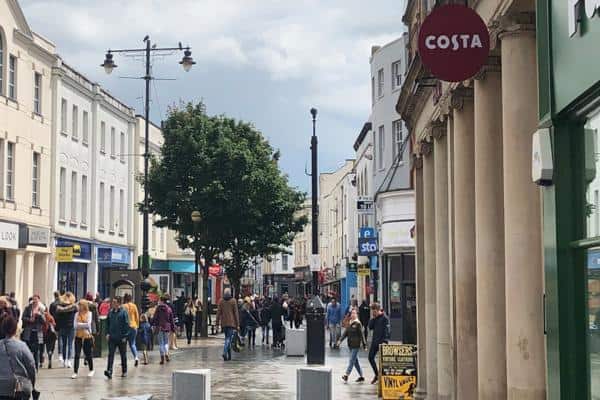Fewer shops are now standing empty after the vacancy rate fell for the fourth quarter in a row, the latest data suggests.lose
New tenants are moving back into stores at the same time as footfall continues to improve and as a smaller share of retail sales takes place online, following pandemic peaks. The latest ONS figures suggest that 26.4% of sales took place online in September – a figure that has been broadly consistent since May 2022, but is still well ahead of the 19.7% of sales that took place online before the pandemic. Similarly, today’s empty shop rate, as measured by the BRC/LDC Vacancy Monitor, is still higher than before the pandemic.
In all, 13.9% of shops in Great Britain were vacant in the third quarter of this year – between June and September. That represents a 0.1 percentage point (pp) improvement on the second quarter, and a 0.6pp improvement on the same time last year.
The highest empty rate is in shopping centres (- 0.1pp to 18.8%), followed by high streets (-0.1pp to 13.9%) and retail parks (-0.5pp to 9.7%). Retail parks continue to be the location with fewest vacancies, and have benefited as retailers invest once more in opening new shops.
Helen Dickinson, chief executive of the British Retail Consortium, says: “The overall shop vacancy rate improved for the fourth consecutive quarter; however, vacancies remain higher than pre-pandemic levels. Some locations are benefitting from a pickup in tourism and a gradual return to offices, but levels of footfall are still below those of 2019. This gave some businesses the confidence to start investing, opening new stores around the country, especially in retail parks. But the North-South divide is again laid bare in these figures. While the North has seen some of the biggest improvements in openings over the last year, they still have some of the highest vacancy rates in the country, with one in five shops closed in the North East.”
The BRC/LDC figures suggest that the lowest vacancy rates are in London, the South East, and East of England, while the highest rates are in the North East, followed by Wales and the Midlands.
Lucy Stainton, commercial director at the Local Data Company, says: “Our latest analysis of the physical retail and leisure market across GB as a whole shows a sustained level of recovery at a time when further economic headwinds have been well-documented. With a decrease in store closures compared to the same time last year, in parallel with an increase in openings, vacancy rates have continued to decline as we look to the end of 2022.
“The pandemic proved the final straw for a number of ailing retailers. The CVA and insolvency activity which typified the most challenged end of the market in the Covid years caused a significant spike in empty units, which are now slowly being reoccupied.
“Independent businesses in particular have continued to flourish as consumers remain loyal to their local high streets. However, we can’t ignore oncoming economic pressures as consumers face a winter of increased caution and reduced disposable income. Just as the market has started to find its feet, we are now about to face a new round of tests— but perhaps the lessons learned during the pandemic will help chains and independents to weather the coming storm. The latest GB figures are encouraging but should still be viewed with real caution, and we would predict that this increase in occupancy could slow as retail and hospitality businesses grapple with a tough winter.”
Warning on store closures
The BRC’s Dickinson warns that government action to freeze business rates is now necessary in order to prevent more stores closing in the future.
“The costs of operating in many towns and cities remains high and demand will be tested by the fragile economy and falling consumer confidence in the lead up to Christmas,” she says. “Higher costs are already pushing up prices and the industry faces a government imposed extra £800m business rates bill from April 2023. This will force many retailers to make tough decisions about whether to invest in new stores or close existing ones. Government should freeze business rates and reform the broken transitional relief system. This will support investment in communities across the country and help keep prices low for consumers.”









